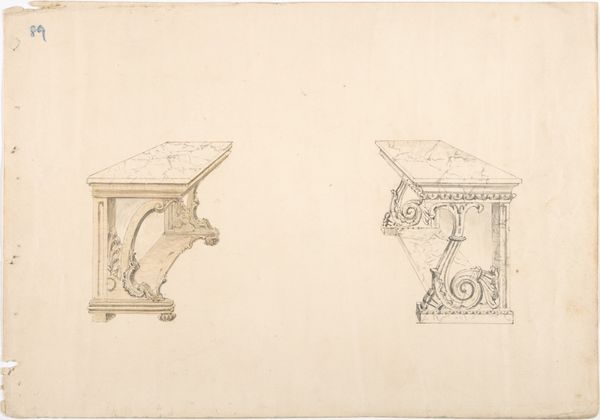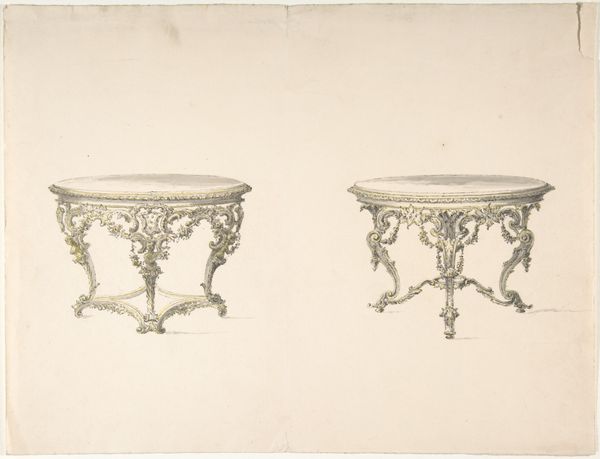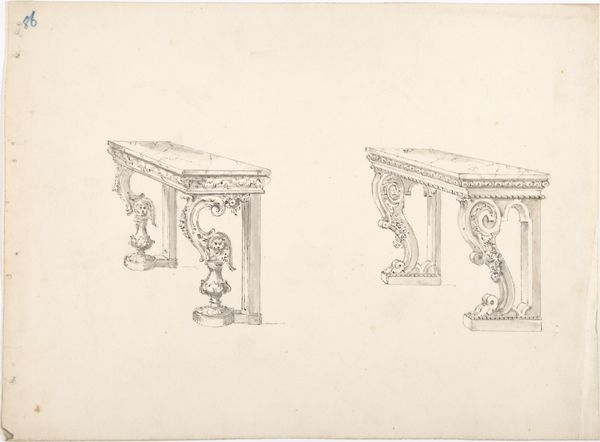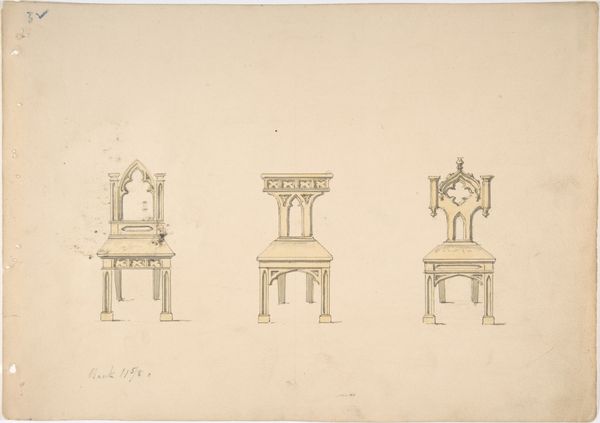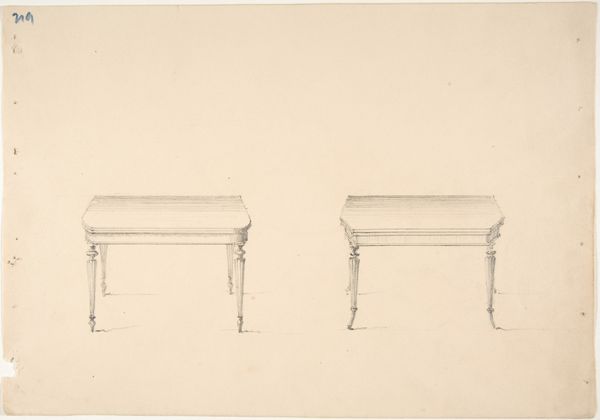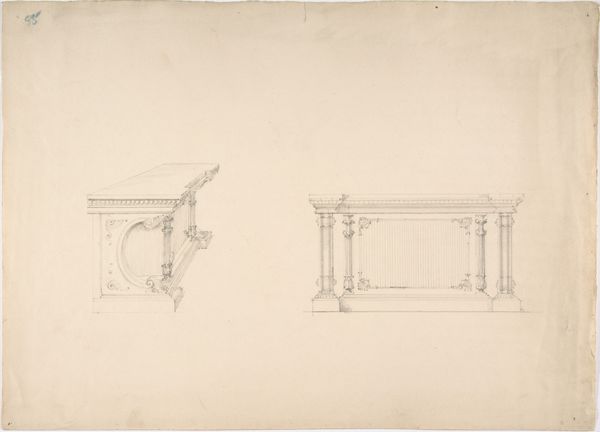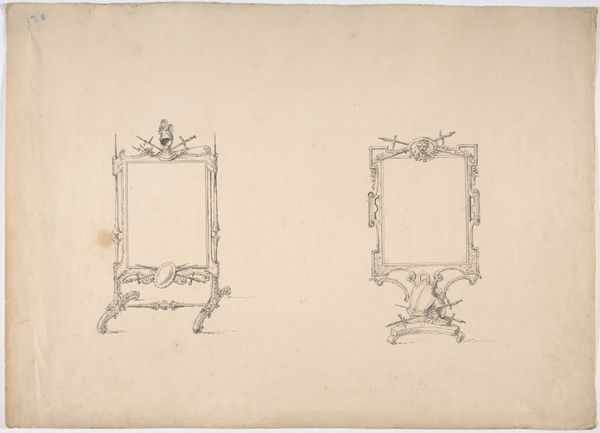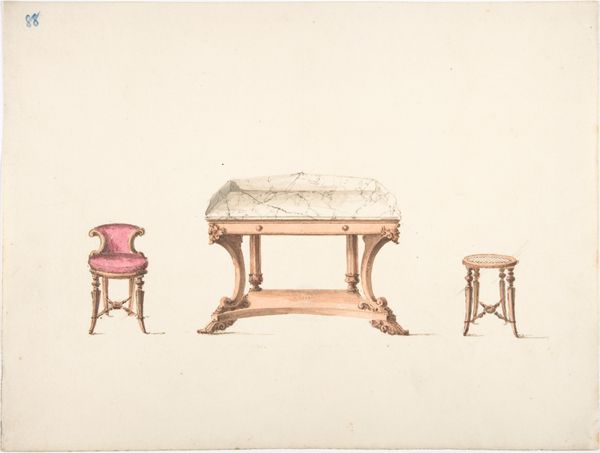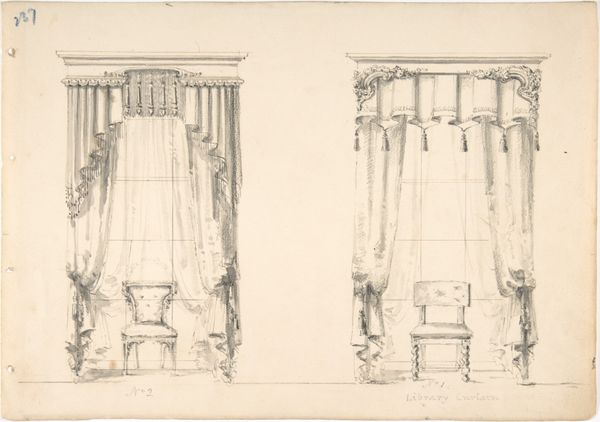
Designs for Two Marble Pier Tables with Draperies 1815 - 1840
0:00
0:00
drawing, watercolor
#
drawing
#
neoclacissism
#
form
#
watercolor
#
geometric
#
decorative-art
Dimensions: sheet: 8 9/16 x 12 5/16 in. (21.7 x 31.2 cm)
Copyright: Public Domain
Curator: At first glance, I see a stage setting without actors. The faded hues evoke memory, like looking at a half-remembered dream of opulence. Editor: Here we have "Designs for Two Marble Pier Tables with Draperies," likely conceived between 1815 and 1840. Executed in watercolor and drawing, it's an intriguing example of decorative art with strong neoclassical influences. What strikes me most is the duality of the design – almost like a mirror image. Curator: Yes, duality, but also discordance! Each table seems to exist in its own space, despite being presented together. And the draperies, clinging like ghosts, give it this feeling of lost grandeur...like props abandoned after the play. I find it unsettling and beautiful at once. Editor: The draperies definitely add to the sense of formality, a theatrical staging as you suggested, while underscoring geometric forms in its basic structure. Beyond its formal beauty, there’s also that lingering whisper of cultural memory of power and sophistication; pier tables and draperies signaling affluence. Curator: Tell me more about what you see there. Do these objects point us toward meanings in that world, that are more important now than ever? Editor: Oh absolutely. The motif and form of pier tables, were frequently situated beneath mirrors, reflect, quite literally, the aspirations and values of that era. Moreover, marble itself – think of it as the ultimate visual signifier that reflects strength, and a connection with the legacy of ancient empires. So placing it within this piece, offers a meditation on the nature of value itself and also the aesthetic preferences in general. Curator: Value indeed. It's almost ironic that such robust materials—marble and those architectural shapes — are depicted with such ethereal delicacy. Editor: It’s precisely this contrast, I believe, that makes the design so compelling. It embodies the transient nature of grandeur and luxury, where even the most solid objects are eventually softened by time and become mere echoes of their former glory. The artist truly understands how an image is a cultural text, carrying encoded messages and cultural scripts far beyond immediate functionality. Curator: In revisiting it, the play of contrasts deepens my appreciation. Those sturdy, noble objects captured in almost disappearing light -- what a reflection on power and fragility intertwined. Thanks, it seems there's more life in those abandoned props than one might suspect.
Comments
No comments
Be the first to comment and join the conversation on the ultimate creative platform.
